Djémila – Lost City Of The Ancient Kingdom Of Numidia
Jan Bartek - AncientPages.com - When Albert Camus (1913 -1960) wrote about Djémila, a ruined Roman city in the mountains of Northern Algeria, he said this beautiful long-abandoned place is inhabited by the wind alone.
Camus wrote in Noces (Nuptials) that when you walk among the city's ancient ruins, you can hear the wind which "pounces fitfully on the remains of the houses, on the immense forum that extends from the triumphal arch to the temple." He described the ancient lost city of the Numida kingdom as a "great cry thrown out by the lugubrious and solemn stones at the mountains, the sky, and the silence."
Ancient lost Roman city Djémila. Credit: Yves Jalabert - CC BY-SA 2.0
Today a dead city, Djémila was once a vivid place where people watched the theater and visited temples and basilicas. The sudden decline of Djémila remains a mystery. Still, archaeologists excavating at the site have discovered "broken statues, evidence of fire and absence of precious metals among the ruins suggest the city may have been pillaged." 1
But who could have destroyed this historical ancient city in North Africa?
Camus wrote about his experiences in Djémila in 1936, but it has taken scholars many years to learn about this place's history. Only recently have archaeologists uncovered the history of Djémila that, because of its unique adaptation of Roman architecture, became a UNESCO World Heritage Site.
The Berber City Cuicul In The Ancient Kingdom Of Numidia
Excavations revealed that Djémila was founded around 96 A.D. Its original Berber name was Cuicul.
The city, built about 900 meters (3,000 ft) above sea level, was part of the ancient Kingdom of Numidia.
"The first Algerian kingdom, Numidia, was established by Berber tribe chief Micipsa in 106 B.C. Soon after that, it fell under the rule of the Romans. For a brief period in the 5th century the Vandals, a Germanic tribe, invaded the kingdom but were pushed out by the Romans again. In the 7th century, the Arabs invaded North Africa, bringing with them a new religion, Islam. In Algeria they were resisted by a woman leader, Kahina, the high princess of a tribe supposedly converted to Judaism., but eventually the Berbers became a province of the Umayyad caliphate. The Arabs, however, remained largely an urban elite." 2
Ancient Roman Buildings Still Stand In Djémila
The structures in Djémila have withstood the test of time. When the Duke of Orléans visited the ancient city of Djémila in 1839, he found the triumphal arc so magnificent that he wanted to transport the monument to Paris. For unknown reasons, his project was abandoned, and the arch remained in the same place it has always been. Today, Djémila can boost by having some of the most extraordinary Roman architecture in North Africa.
Djémila's Roman theater. Credit: habib kaki - CC BY 3.0
The ancient ruins offer evidence Djémila was a city filled with activity. The city had its own Senate and Forum. "Around the beginning of the 3rd century, it expanded beyond its ramparts with the creation of the Septimius Severus Temple, the Arch of Caracalla, the market and the civil basilica." 3
"In the third century, the city numbered some then thousand inhabitants, who can be imagined going about their business, perambulating from their domus to the temples and the two covered markets, whose counters are still in place." 1
There are many Christian buildings in Djémila. Among them are a cathedral, as well as a church and its baptistry. Archaeologists have unearthed startling mosaics at the site, many of them depicting mythological tales and scenes of daily life. The city was abandoned after the fall of the Roman Empire around the 5th century and 6th century, but as mentioned at the beginning, there are also indications it was also pillaged. Perhaps some local tribes stole whatever they could after Djémila was abandoned by its residents.
Arc of Caracalla (Djemila). Credit: Yves Jalabert - CC BY-SA 2.0
Djémila means in Arabic the 'Beautiful One', and the name is suitable because the city is truly a Roman beauty. When Muslims reached Djémila, they respectfully abstained from building there. The ancient Roman ruins were preserved for future generations. One does not need to have much imagination to picture what the city must have looked like before being abandoned.
Djémila is an ancient Roman jewel in North Africa.
Updated on August 27, 2022
Written by Jan Bartek - AncientPages.com Staff Writer
Copyright © AncientPages.com All rights reserved. This material may not be published, broadcast, rewritten or redistributed in whole or part without the express written permission of AncientPages.com
Expand for references- Aude de Tocqueville - Atlas of Lost Cities: A Travel Guide to Abandoned and Forsaken Destinations
- "Algeria: From FLN to FIS and Beyond." Insight Turkey, no. 5 (1997): 119-27.
- UNESCO - Djémila
More From Ancient Pages
-
 Why Was The Pineapple A Status Symbol Once?
Ancient History Facts | Jun 4, 2025
Why Was The Pineapple A Status Symbol Once?
Ancient History Facts | Jun 4, 2025 -
 The 426-Km-Long Roman Aqueduct Provided Water For Constantinople – New Study
Archaeology | May 11, 2021
The 426-Km-Long Roman Aqueduct Provided Water For Constantinople – New Study
Archaeology | May 11, 2021 -
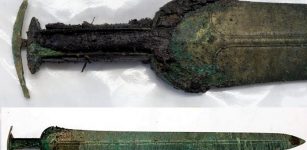 A 1.3 kg Heavy Bronze Sword Unearthed On Funen Island, Denmark
Archaeology | Mar 16, 2021
A 1.3 kg Heavy Bronze Sword Unearthed On Funen Island, Denmark
Archaeology | Mar 16, 2021 -
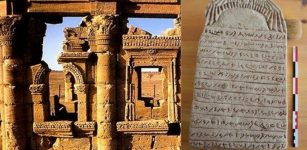 Ancient Napata And Meroe Kingdoms Reveal Secrets Of Queen Tiye And Goddess Maat
Archaeology | Mar 7, 2018
Ancient Napata And Meroe Kingdoms Reveal Secrets Of Queen Tiye And Goddess Maat
Archaeology | Mar 7, 2018 -
 Isotope Analysis Helps Tell The Stories Of Aboriginal People Living Under Early Colonial Expansion
Archaeology | May 2, 2023
Isotope Analysis Helps Tell The Stories Of Aboriginal People Living Under Early Colonial Expansion
Archaeology | May 2, 2023 -
 Gonzalo Guerrero – The Renegade Who Joined The Maya Against His Own People
Featured Stories | Feb 27, 2020
Gonzalo Guerrero – The Renegade Who Joined The Maya Against His Own People
Featured Stories | Feb 27, 2020 -
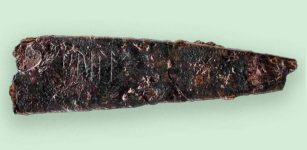 2,000-Year-Old Knife With Denmark’s Oldest Runes Found On Funen
Artifacts | Jan 22, 2024
2,000-Year-Old Knife With Denmark’s Oldest Runes Found On Funen
Artifacts | Jan 22, 2024 -
 Who Were The First Icelanders?
Archaeology | Jun 4, 2018
Who Were The First Icelanders?
Archaeology | Jun 4, 2018 -
 Mysterious Water Indians: Brotherhood Of Semi-Divine Beings Described As Half Men And Half Fish
Ancient Mysteries | Jul 8, 2014
Mysterious Water Indians: Brotherhood Of Semi-Divine Beings Described As Half Men And Half Fish
Ancient Mysteries | Jul 8, 2014 -
 Forgotten Ancient Wisdom: People Have Two Souls – Native American And Pre-Christian Beliefs Reveal
Featured Stories | May 15, 2025
Forgotten Ancient Wisdom: People Have Two Souls – Native American And Pre-Christian Beliefs Reveal
Featured Stories | May 15, 2025 -
 Tiglath Pileser III: Neo-Assyria’s Strong King Who Built A Mighty Empire
Featured Stories | May 2, 2019
Tiglath Pileser III: Neo-Assyria’s Strong King Who Built A Mighty Empire
Featured Stories | May 2, 2019 -
 Evidence Of Yue – Ancient Chinese Criminal Punishment Found At Sanmenxia City
Archaeology | May 17, 2024
Evidence Of Yue – Ancient Chinese Criminal Punishment Found At Sanmenxia City
Archaeology | May 17, 2024 -
 1,500-Year-Old Joint Burial Offers A Look Into Attitudes Toward Love And The Afterlife
Archaeology | Sep 14, 2021
1,500-Year-Old Joint Burial Offers A Look Into Attitudes Toward Love And The Afterlife
Archaeology | Sep 14, 2021 -
 Luna Settlement: First Multi-Year European Settlement Identified In Pensacola, Florida
Archaeology | Dec 26, 2015
Luna Settlement: First Multi-Year European Settlement Identified In Pensacola, Florida
Archaeology | Dec 26, 2015 -
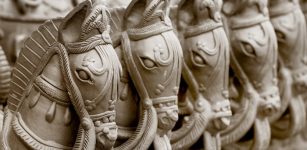 Legendary Uchchaihshravas: Divine Seven-Headed Flying Horse Of God Indra
Featured Stories | May 1, 2017
Legendary Uchchaihshravas: Divine Seven-Headed Flying Horse Of God Indra
Featured Stories | May 1, 2017 -
 Humans Got To America 7,000 Years Earlier Than Thought – New Research Confirms
Archaeology | Oct 9, 2023
Humans Got To America 7,000 Years Earlier Than Thought – New Research Confirms
Archaeology | Oct 9, 2023 -
 Cave Of The Stone Sepulcher – ‘Actun Tunichil Muknal’ And Its Dark History
Featured Stories | Mar 22, 2019
Cave Of The Stone Sepulcher – ‘Actun Tunichil Muknal’ And Its Dark History
Featured Stories | Mar 22, 2019 -
 Biblical Events Confirmed: The Jerusalem’s Wall That Nehemiah Built
Biblical Mysteries | Mar 19, 2014
Biblical Events Confirmed: The Jerusalem’s Wall That Nehemiah Built
Biblical Mysteries | Mar 19, 2014 -
 First Solid Scientific Evidence That Vikings Brought Animals To Britain
Archaeology | Feb 1, 2023
First Solid Scientific Evidence That Vikings Brought Animals To Britain
Archaeology | Feb 1, 2023 -
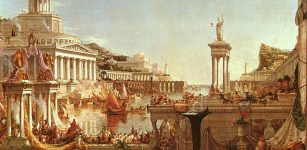 Did Lead Poisoning Cause The Fall Of The Roman Empire?
Archaeology | Oct 24, 2017
Did Lead Poisoning Cause The Fall Of The Roman Empire?
Archaeology | Oct 24, 2017



